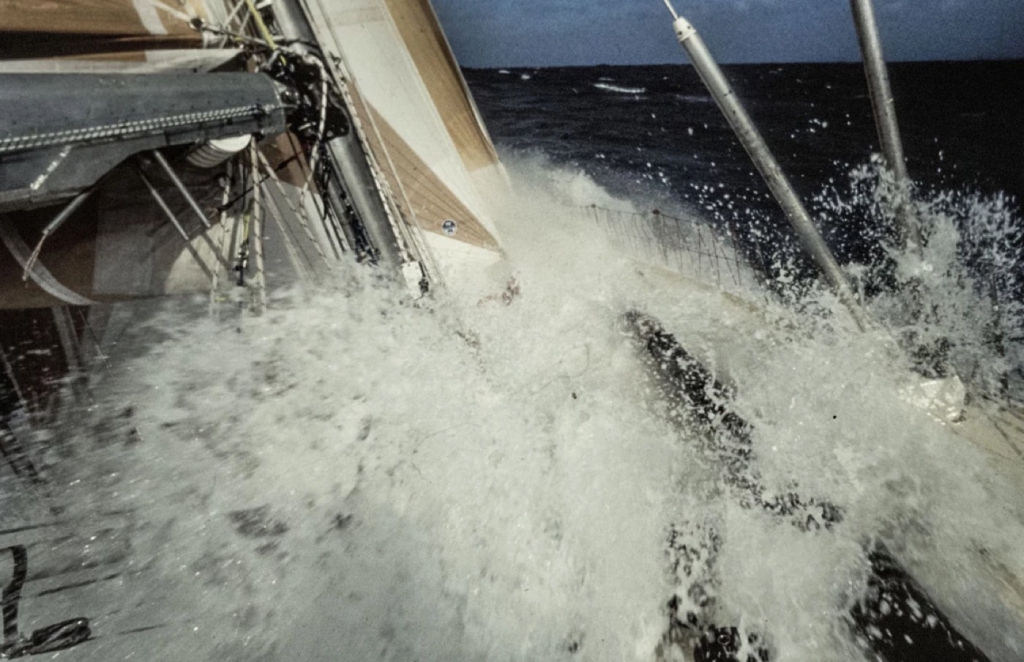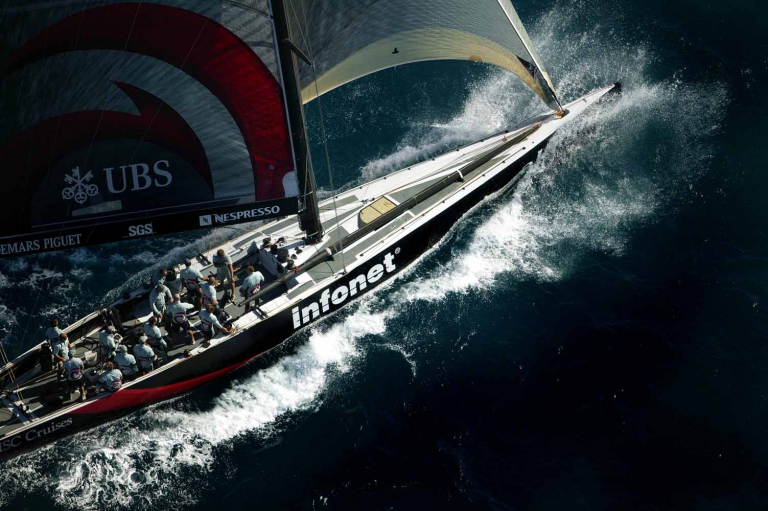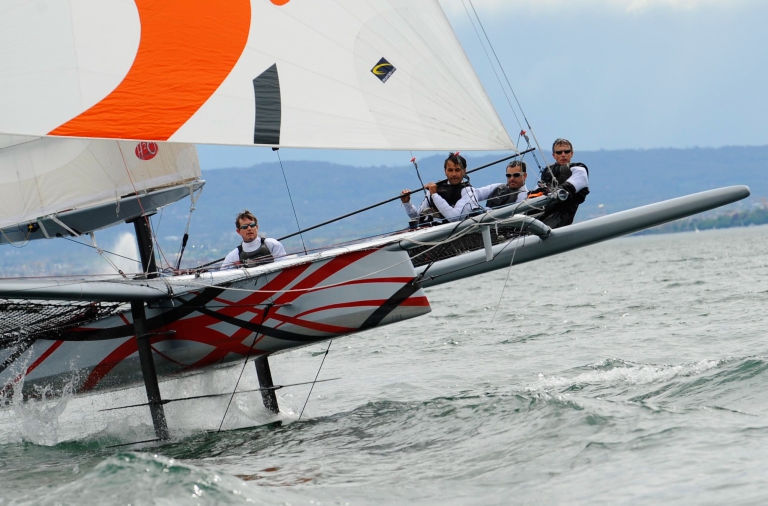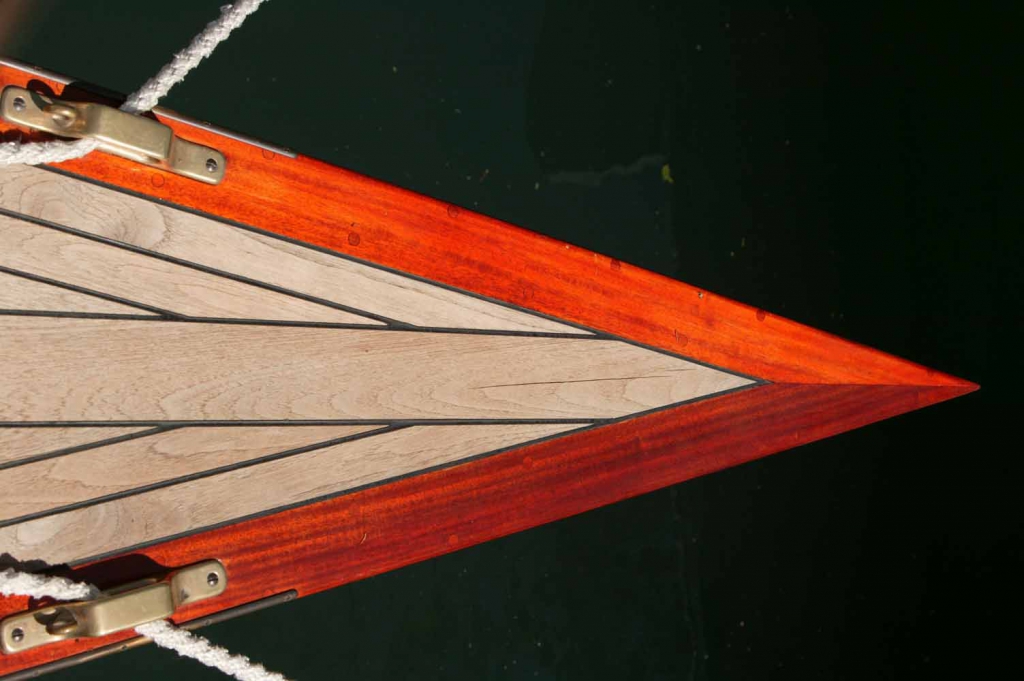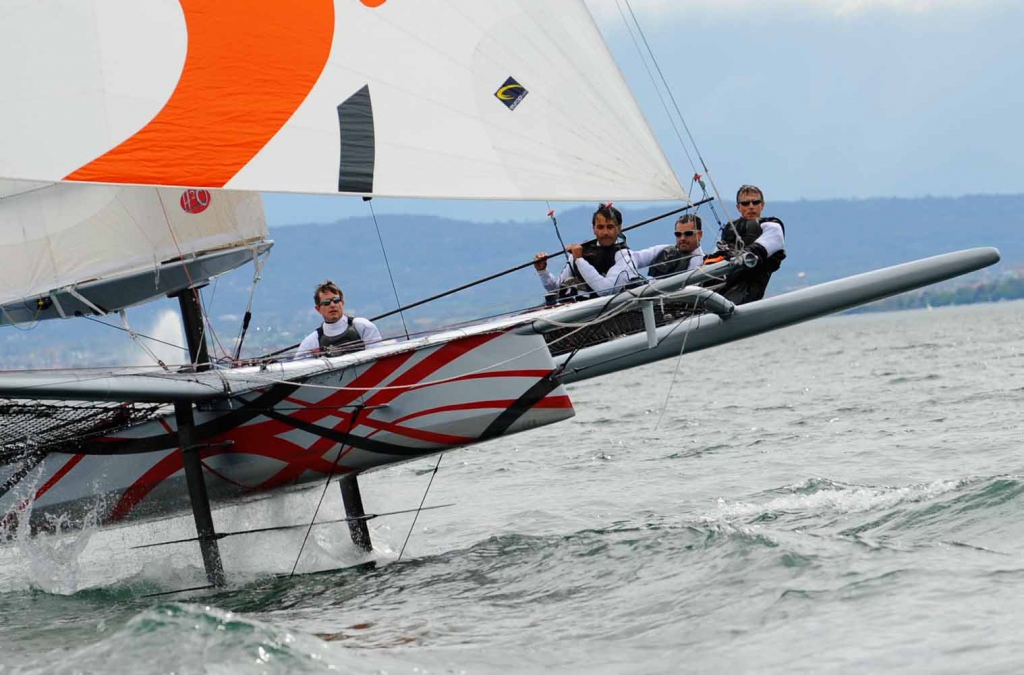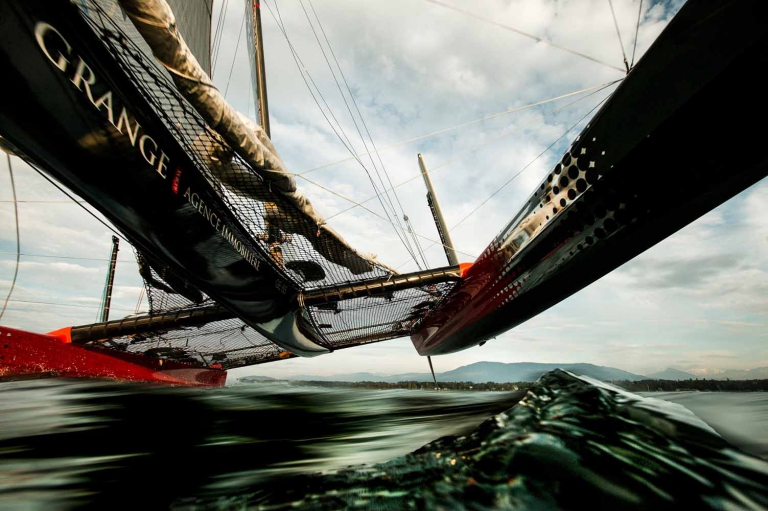In 1994, The Whitbread Race makes a stop in Perth. Philippe meets Eugene Platon on the pontoons, the skipper of Hetman Sahaidachny. The southern seas allow heavier crews, the Ukrainian skipper wishes to take this step to embark a rider already connoisseur of the requirements of the South Seas. He is looking for an experienced helmsman. The energy shines between the two men. Philippe embarks in the wake and brings his knowledge of the rhythms of the southern navigations.
On board the WOR60 Ukrainian, the atmosphere is excellent, very warm and free of any internal competition. Ukrainians have just open the doors of the Eastern countries, they are the first to discover the West ???. They want to discover new approaches and cultures inaccessible until then. Their openness and curiosity are boundless. Philippe is the only foreigner in the middle of this crew composed exclusively of Ukrainians, some of them do not speak English. The sudden immersion in this crew, where he knows no one, will remain an unforgettable human experience.
On board, we are far from the rigor of Anglo-Saxon crews and the crew was not “cutting his toothbrush” (fooling around). On the contrary, in the middle of the square sways an Ukrainian ham, Philippe, accustomed to the hunt for weight, will ask himself every day why did we embark the bone of the ham. Funnier, an open secret runs aboard: there would be a bottle of homemade vodka on board. The mysterious drink, because of its degree of alcohol, finally proved easier to find than to drink. The unprecedented cohesion of the crew was certainly due to the fact that they were all former volunteers at the time of the Chernobyl disaster. The Ukrainian state had financed their sailing project as a reward for their good and loyal services.
At the end of the South Seas, Philippe’s mission is over and he leaves the crew full of memories. The Ukrainian boat will finish its adventure by winning a magnificent tenth place.
